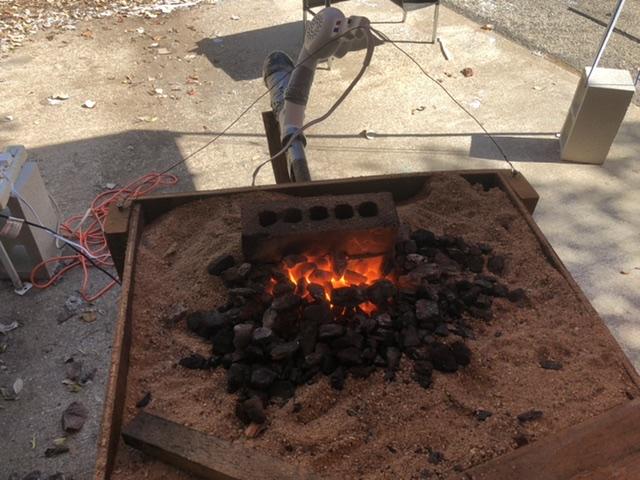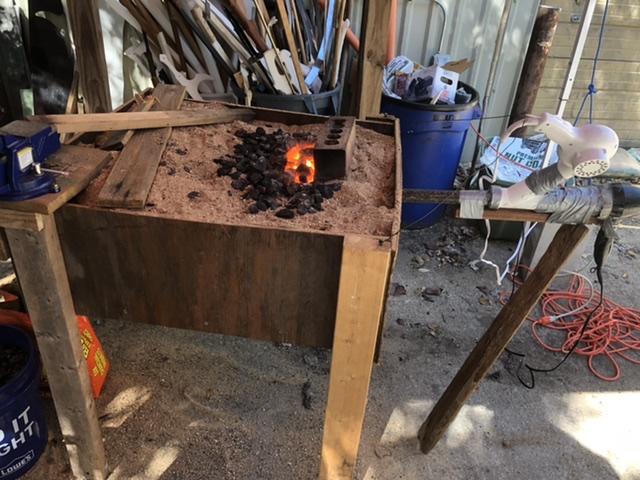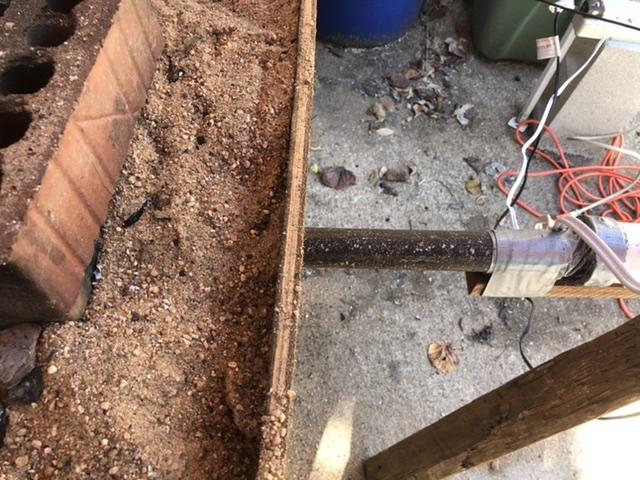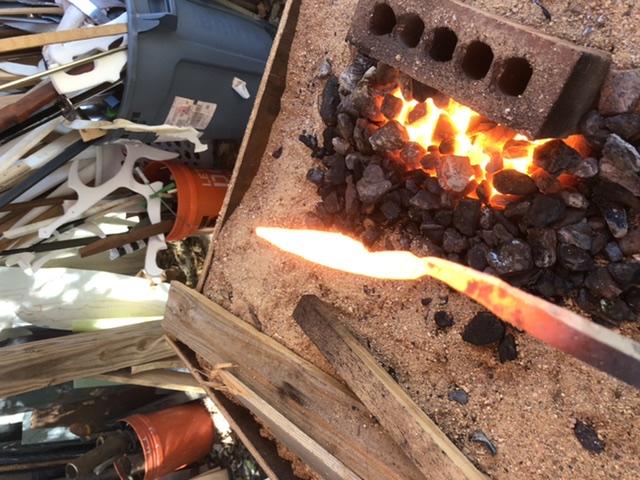
rdennett
Members-
Posts
118 -
Joined
-
Last visited
Content Type
Profiles
Forums
Articles
Gallery
Downloads
Events
Everything posted by rdennett
-
What kind of breaker did you need? Also, if time is not an issue, can you weld thicker steel with multiple passes with one of these on 110v? Thx
-
I would use 220 if I could, but you're missing the point. I want to know what one of these 110 stick (NOT fcaw) machines CAN do. I see that my link to Amazon is gone, but for those who are trying to figure out what I have in mind, think Everlast 140ST. That one is 110 only, iirc, and comes with TIG accessories, but there are similar dual voltage welders which just come with a stinger and not a TIG torch.
-
Great success! I found rice coal and only used one dryer. Unfortunately, now it’s a little too hot... Got to put a choke on it. thanks for all your help!
-
Sorry, that’s IGBT. Think [Commercial link removed] I have also been setting up a forge at a local maker space, and 110v is all I have to work with there. Thanks, Rob
-
While I have a Lincoln AC/DC 225/125 welder, I don’t have anywhere to plug it in. Lately, I have been toying with the idea of purchasing one of those little IBGT dual voltage stick welders with an eye to running it off 110V. I am not a professional welder (obviously), but I would occasionally like to lay down a bead or two. If I use 2# of rod in a year, I would be amazed. That said, what can I do with one of these, particularly off a 20A breaker? Can I use multiple passes to weld even thicker bits of steel albeit at a much slower rate? What if I upgrade to a 30A breaker? Thanks, Rob
-
I have read that thread a few times, albeit not lately. I mostly based my design off of Torbjorn Ahmen's:. I will have another look at the JABOD thread. Thx, Rob
-
The pipe is 1-1/4 black pipe I think, a bit bigger than a quarter. I picked it up from the junkyard. Thx It’s got about two inches of coal on it, but I will add some more bricks and get it a little higher. thx
-
Indeed I did try to burn the steel. A good orange as you can see from the pics is all I could get.
-
I originally used only one hair dryer. The blast seemed far too anemic, hence the second one.
-
This is the Tractor Supply stuff. Coal pieces are about the size of a charcoal briquette. Too coarse? Thanks, Rob
-
I am finishing up a JABOD forge using anthracite in lieu of coke (can't beat the price and coke and bituminous are hard to come by), but while I can easily get steel to a good orange heat, that's as hot as it seems to get. On the plus side, I don't burn up the steel, but I do want to be able to forge weld in this thing. What variables are responsible for achieving welding heat in general? I am using 2 hair driers in a Y plumbing fitting for air blast, the cavity where the coal goes is about 6" deep (15 cm) and it's bottom is about 2" below the tuyere. The coal is piled up about 2-3" above the point where it's level with the top of the sand. Is the air too weak, the fire too shallow, the coal too coarse or what? Thanks, Rob Pic 3 hair driers pic 5 tuyere pipe with quarter for scale last pics show about as hot as it’ll get material is 5/8” mild steel
-
I discovered that Tractor Supply only stocks it seasonally and the local Centaur has closed down. Is there a more consistent source of coal or coke around here? I currently have some bituminous coal and some coke (~25 lbs. each), but I am trying to set up a forge at a Makerspace and don't want to tap into my own supplies if I don't have to. I used to see this stuff advertised on Craigslist a lot, but not lately. I will go to charcoal if I have to, but I would rather use coal. Propane isn't in the budget (not the fuel, but the forge). Thanks, Rob
-
I got a hair drier (one where I could turn the coils off) for $4 at Goodwill and a lamp dimmer from Lowes (like This) for about $12 and it works great. My tuyere fits the dryer nozzle and I use duct tape to seal it. Rob
-
I forged a small striker steel for a friend and I had a great deal of trouble getting it to make any sort of sparks. It was forged from an old file I bought at a flea market, then quenched in water and tempered to dark blue. The flint certainly made marks on the striking face, but I only got a spark twice out of about a hundred tries. I tried striking a spark both before and after tempering it. I had made one for my self a long time ago and it works fine but this was pretty much a bust. Thanks for any help, Rob
-
I am in Austin, TX. I have no specific use for such metal at this time. I asked about car parts because they are the easiest for me to acquire. I will see about companies making fences and so forth. One problem with drops is that scrap prices are high enough that people are poaching it to sell to scrapyards. The problem that I have with new steel is transporting it back to my shop. I don't do this professionally so I am not going to pay to have a bunch of stuff delivered if I don't have to. Thanks, Rob
-
I have a decent supply of high carbon steel, but I am running low on the low carbon stuff. My favorite recycler stopped selling to the public a few years back and while I have found another scrapyard willing to sell to me, but most of what they have is car parts and structural steel. I understand that the structural stuff is probably A36 which is low carbon, but the size of most of the pieces doesn't lend itself to me transporting them. I also have a friend who is a mechanic and is willing to set aside broken parts for me. Are there any useful mild steel parts I should have him look out for? Thanks, Rob
-
I made a pair of bolt head tongs yesterday and I notice that the curved section between the bit and the hinge is a bit large. Are there some ratios that smiths use when making tongs to avoid wasting material and still get the sizes they want? Thanks, Rob
-
Turns out I just needed more of the same. I used more wood and that gave me enough heat to get the coke going. Thanks, Rob
-
I recently purchased 50lbs. of metallurgical coke from Centaur Forge. I am just about out of the blacksmithing coal I used to use, and so today I tried to light the coke the way I used to do it with coal. I had heard that coke is hard to light and now I believe it. I normally collect some yard waste and light that, put the air on medium and push a little coal around it and it goes up in about 5 minutes. This time the yard waste burned out before any of the coke lit. Should I use a piece of lump charcoal or something? Thanks, Rob
-
making a rifle in 58 minutes
rdennett replied to Steve Sells's topic in Blacksmithing, General Discussion
Does anyone have a better description of the boring bits and reamer? Thanks, Rob -
I don't have power in my shop, but I decided to run a couple of extension cords to it. I picked up a hair dryer from Goodwill for $5 and a dimmer control for $12 and rigged up the dryer to the tuyere pipe. Now it runs very well. If only I could hook up a chimney. Is there a design for a stealth chimney? Thanks, Rob
-
I can't put as much heat as I want where I want it when working. My forge pot is an old honda break rotor about an inch and a half to two inches deep and about six inches in diameter and I am using coal for fuel. When I place a piece of stock so that it rests on both sides of the rotor, the heat doesn't seem to get above cherry red. If I dip the tip of the stock into the firepot like you aren't supposed to, I can bring the piece up to welding heat. Do I not have enough coal on top of the work? Nothing sucks like pumping the bellows for 5 minutes and pulling out the steel only to find that the metal isn't even red. My tuyere isn't clogged. Thanks, Rob
-
Wanted: ideas for making an unpowered air supply
rdennett replied to rdennett's topic in Bellows, Blowers
I am not quite sure how to do the bicycle thing without cutting off one side of the frame and rig up some kind of bracket to support the now-unsupported side. Is there another way you had in mind? When I see images of third world smiths using bicycles to power their forges, they are using the rear wheel as a large-diameter pulley to drive the small pulley on a blower spindle. The idea of ganging together several short pieces of PVC sound interesting, but I am not quite sure how to rig up the valves (unless you are not talking about double action bellows). Still, I will pass this along. I think my friend may have lost his fire for the project. To be fair, not too many hobby smiths forge in Texas in August. Rob






